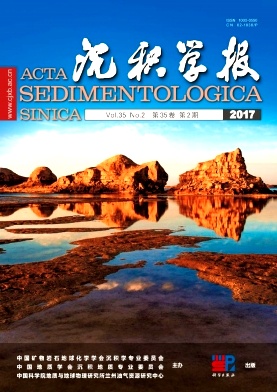Oligocene Sequence Framework and Depositional Response in the Xihu Depression, East China Sea Shelf Basin
doi: 10.14027/j.cnki.cjxb.2017.02.009
- Received Date: 2016-07-18
- Rev Recd Date: 2016-12-02
- Publish Date: 2017-04-10
-
Key words:
- Xihu Sag /
- Huagang Formation /
- sequence subdivision /
- depositional response
Abstract: The East China Sea Shelf Basin (ECSSB) is the largest sedimentary basin in offshore China, which contains the largest hydrocarbon bearing unit of Xihu Depression. However, after years of exploration practices, the Huagang Formation in Oligocene has been proven as a major gas reservoir, which has undergone controversy on subdivision of sequence stratigraphy and types of sedimentary systems for a long time. Combining with basin structure and tectonic context, this study subdivides the Oligocene into 5 third-order sequences and 12 system tracts in the Xihu Sag on the basis of base level cycle analysis, core calibration, and seismic reflection features.Furthermore, sedimentary environments were identified by core description, sedimentary structures, trace fossils, and geochemical analysis. Typical sedimentary sequences were established including fluvial, delta, tidal estuary, and beach-bar systems.Sedimentary system types and distribution have been clarified of the Huagang Formation in the Xihu Sag. In the Oligocene, the Xihu Sag was in a transitional environment (mainly in lacustrine environment), which experienced two major times of marine transgressions (around 29.5 Ma and 24.3 Ma). Depositional systems were diverse from south to north, mainly consisting of deltas in the short axis from east to west, tidal estuaries in the south, and beach-bars in the northeast gentle slope. Finally, tectonic-sedimentary genetic model has been established in the ECSSB, showing basin tectonic setting and depositional response under the context of rifting-depression transition and marine-continental alternation.
| Citation: | YU XingHe, LI ShunLi, CAO Bing, HOU GuoWei, WANG YaFeng, HUANGFU ZhiYuan. Oligocene Sequence Framework and Depositional Response in the Xihu Depression, East China Sea Shelf Basin[J]. Acta Sedimentologica Sinica, 2017, 35(2): 299-314. doi: 10.14027/j.cnki.cjxb.2017.02.009 |






 DownLoad:
DownLoad: